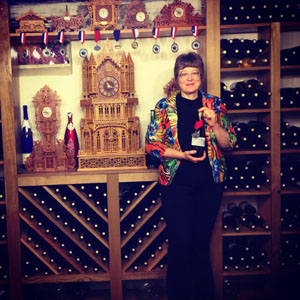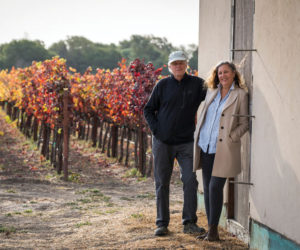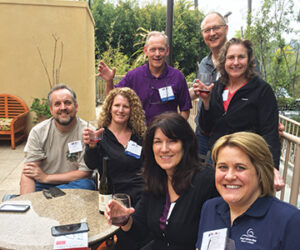
In 1972 our family moved to the Lang Farm Homestead, where my father was raised. The farm had eight grapevines that were planted in the early 1900s by my paternal great-grandfather, Andrew Lang. Over the years I learned how to tend the vines. Our first attempt to make wine occurred in the mid 1980s when my dad decided to try a batch of Concord. Wine eventually happened, but not without my mother finding the barrel spewing gas and juice all over the basement. Needless to say my father, Ernie the engineer, decided to take up a different hobby (scroll-sawing).
I went on to attend college to become a veterinarian. Between semesters and over the summers I continued to nurture these old vines. In the spring of 1996, my husband, Kevin, and I and our kids moved back to the Lang Homestead to care for the farm. That September we were inundated with 25 bushels of grapes from the vines. I said to my husband, “We can’t possibly use all of these grapes for jelly — why don’t we try to make wine?” We had no idea what we were doing but I thought my 24 credits of chemistry might come in handy. By Christmas we had a drinkable wine. I was fascinated and began to read every article and book I could find about enology and viticulture.
One of the old vines in our vineyard is a red American grape that we think is called “Agawam.” It gets higher sugar than Concord (18–19 °Brix) and has much less Vitis labrusca character. I also have a cutting of great grandma Maggie’s Fredonia vine, and I use this grape to make a fruity blend with Agawam called “Homestead Red.”
Over the years I have planted 200 other vines and I am still determining what grows best in my microclimate. My most reliable varieties are Traminette, Seyval Blanc, Noiret, Chancellor, and Aurora. I also grow Lemberger, Zweigelt, Dornfelder, and Cabernet Franc.
After work you can find me fussing over my vines often until dark — leaf-pulling, balancing the crop, and tweaking the canopy to capture as much sunlight as possible. A good spray program is necessary because of the rain and humidity. My vinifera grapes are prepared for the cold winters by covering the grafts with bark mulch. I prune late in the spring to delay bud break and I select four renewal canes on the viniferas to compensate for bud kill and cane damage. Unfortunately the yellow jackets, hornets, deer and groundhogs like my grapes as much as I do! Despite all the challenges of growing grapes in western Pennsylvania I find it very fun and rewarding to make award-winning amateur wines from my own grapes.
In 2012 my husband built a beautiful wine cellar in the basement using wood harvested from trees on the farm. My father’s scroll-sawed clocks are on display along with my wines and medals. My grown children now volunteer to help with the winemaking process — especially during bottling and wine tasting events! I am so proud and honored to care for my family’s farm and to have the privilege of nurturing vines that once belonged to great grandparents on both sides of my family.






